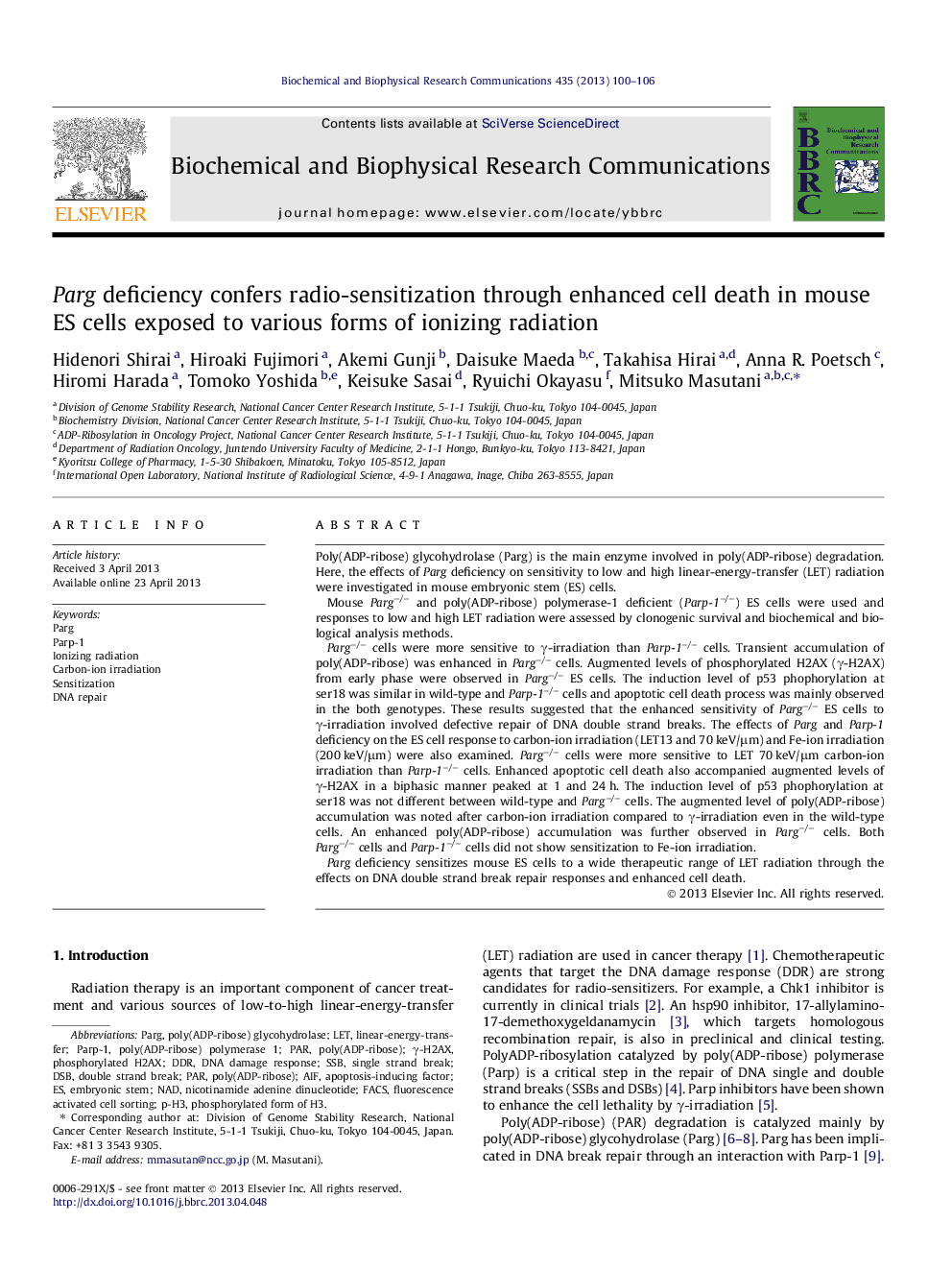| Article ID | Journal | Published Year | Pages | File Type |
|---|---|---|---|---|
| 1928796 | Biochemical and Biophysical Research Communications | 2013 | 7 Pages |
•Parg−/− ES cells were more sensitive to γ-irradiation than Parp-1−/− ES cells.•Parg−/− cells were more sensitive to carbon-ion irradiation than Parp-1−/− cells.•Parg−/− cells showed defects in DSB repair after carbon-ion irradiation.•PAR accumulation was enhanced after carbon-ion irradiation compared to γ-irradiation.
Poly(ADP-ribose) glycohydrolase (Parg) is the main enzyme involved in poly(ADP-ribose) degradation. Here, the effects of Parg deficiency on sensitivity to low and high linear-energy-transfer (LET) radiation were investigated in mouse embryonic stem (ES) cells.Mouse Parg−/− and poly(ADP-ribose) polymerase-1 deficient (Parp-1−/−) ES cells were used and responses to low and high LET radiation were assessed by clonogenic survival and biochemical and biological analysis methods.Parg−/− cells were more sensitive to γ-irradiation than Parp-1−/− cells. Transient accumulation of poly(ADP-ribose) was enhanced in Parg−/− cells. Augmented levels of phosphorylated H2AX (γ-H2AX) from early phase were observed in Parg−/− ES cells. The induction level of p53 phophorylation at ser18 was similar in wild-type and Parp-1−/− cells and apoptotic cell death process was mainly observed in the both genotypes. These results suggested that the enhanced sensitivity of Parg−/− ES cells to γ-irradiation involved defective repair of DNA double strand breaks. The effects of Parg and Parp-1 deficiency on the ES cell response to carbon-ion irradiation (LET13 and 70 keV/μm) and Fe-ion irradiation (200 keV/μm) were also examined. Parg−/− cells were more sensitive to LET 70 keV/μm carbon-ion irradiation than Parp-1−/− cells. Enhanced apoptotic cell death also accompanied augmented levels of γ-H2AX in a biphasic manner peaked at 1 and 24 h. The induction level of p53 phophorylation at ser18 was not different between wild-type and Parg−/− cells. The augmented level of poly(ADP-ribose) accumulation was noted after carbon-ion irradiation compared to γ-irradiation even in the wild-type cells. An enhanced poly(ADP-ribose) accumulation was further observed in Parg−/− cells. Both Parg−/− cells and Parp-1−/− cells did not show sensitization to Fe-ion irradiation.Parg deficiency sensitizes mouse ES cells to a wide therapeutic range of LET radiation through the effects on DNA double strand break repair responses and enhanced cell death.
